16 Wildflowers That Grow in Indiana (Identification Guide with Pictures)
-
Pete Ortiz
- Last updated:
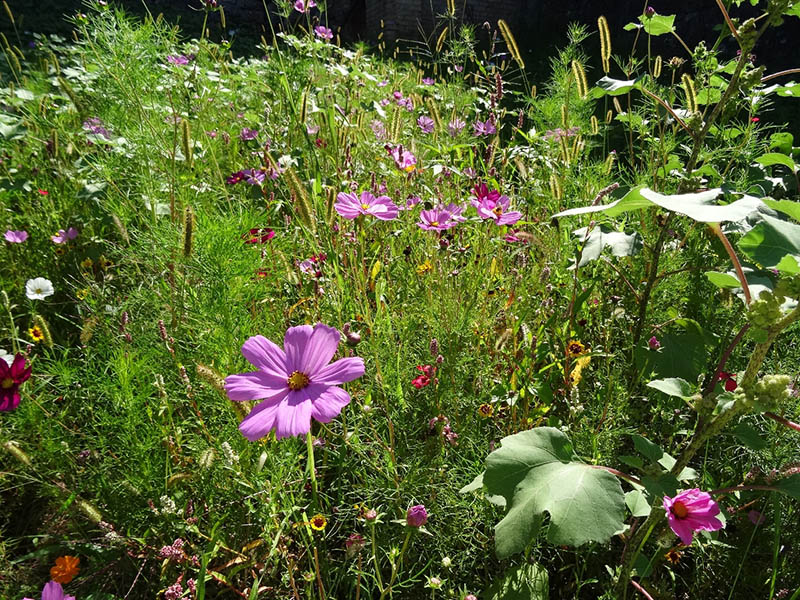
Indiana is mostly famous for its gifted basketball players and mighty automobile industry. However, it’s also one of the most beautiful places on Earth. Located in the Midwest, the Hoosier State has hills, creeks, wild animals, plants, and “Instagram-worthy” views for days. Speaking of plants, we have to mention the fascinating wildflowers that grow in Indiana.
They’re all equally beautiful yet come in different shapes, sizes, petal patterns, and colors. So, here’s our list of the 16 best native wildflowers in Indiana. If you’re a bit overwhelmed by the sheer number of flowers that grow in this lovely state, you can start by checking out our top picks with metrics and pictures and go from there!
The 16 Wildflowers That Grow in Indiana
1. Drumheads Milkwort
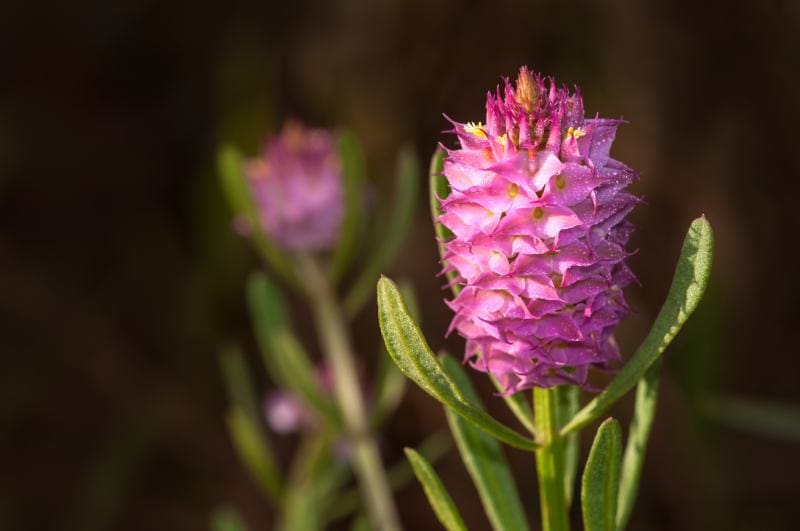
| Botanical Name: | Polygala cruciata |
| Average Size: | 4–12 inches |
| Hardiness Zone: | 8–11 |
| Sun Exposure: | Full sun/partial sun |
| Bloom Time: | Mid-summer to September |
Of the 300–400 drumhead species that grow around the world, 40–60 are native to North America. These wildflowers are big fans of moisture; therefore, you’ll find them in coastal plains and savannas. Often hiding behind tall grass, drumheads are low-growing, relatively short (4–12 inches), and prefer warmer climates. In Indiana, they usually start blooming in July and last through most of September.
The flowers are tiny and tubular yet look beautiful when fully developed. The pink bracts grab even more attention and are often mistaken for petals. As for the leaves, they are short and linear and look like a cross sitting on each node (in Latin, cruciate does mean “cross-shaped”, by the way).
2. Cutleaf Toothwort

| Botanical Name: | Cardamine concatenata |
| Average Size: | 6–16 inches |
| Hardiness Zone: | 3–8 |
| Sun Exposure: | Partial sun/shade |
| Bloom Time: | Late March to May |
If you like to go “flower hunting” in early spring, you’ll definitely appreciate the fascinating cutleaf toothwort. It blooms in late March and only lasts until May, but the lovely blossoms with four petals, six stamens, and a striking pink–white color combination make it all worth it. The stems aren’t that tall, but the leaflets are pretty large and pointy.
Just like most flowers in the Cardamine family, cutleaf toothwort favors moist forests over dry areas. The leaves are edible, have a minty smell, and are sometimes used as medicine by the locals.
3. Wood Lily

| Botanical Name: | Lilium philadelphicum |
| Average Size: | 12–36 inches |
| Hardiness Zone: | 4–8 |
| Sun Exposure: | Full sun/partial shade |
| Bloom Time: | Mid-summer to late August |
The wood lily is one of the most beautiful wildflowers in Indiana. It doesn’t bloom for long but does leave a lasting impression. It stays open for 1–2 weeks; however, the petals don’t close right after the pollination. The upward-facing petals are red and yellow and covered in brown dots: that’s how they attract pollinators like butterflies and hummingbirds.
Now, just like cutleaf toothwort, this wildflower is edible. However, you should only taste the bulbs, not the leaves or stems. They have a turnip-like flavor. Wood lilies prefer full exposure to the sun but can also survive in partial shade. They’re somewhat cold-resistant, too, but grow better in warmer areas.
4. Turk’s-Cap Lily
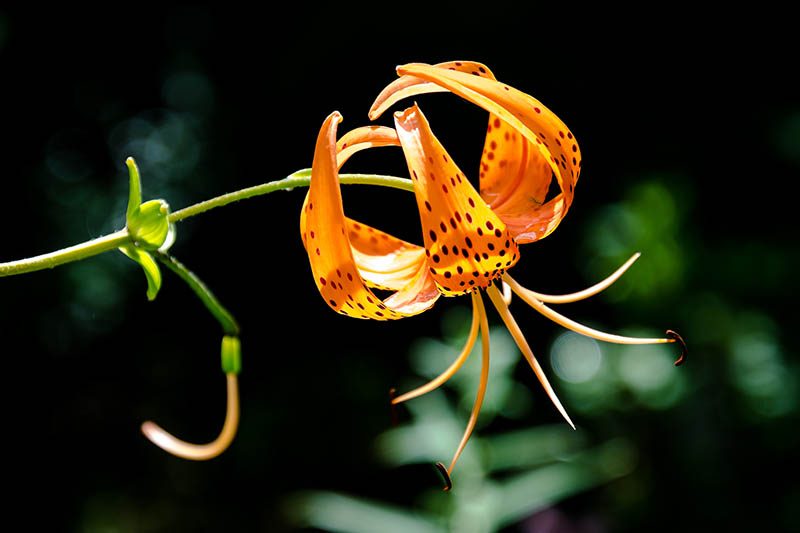
| Botanical Name: | Lilium superbum |
| Average Size: | 48–96 inches |
| Hardiness Zone: | 5–8 |
| Sun Exposure: | Full sun/partial sun |
| Bloom Time: | July through August |
Here, we have another crowd-pleaser from the Lilium species. And in many ways, these two flowers are very similar; they have the same color combination and petal structure. However, the Turk’s-cap lily is brighter and looks absolutely stunning facing down from the long, thin stems.
It blossoms in clusters of 10 to 20 on green–purple stems and reaches up to 96 inches in height. As for the name, it derives from the traditional Turkish hats, turbans. In Indiana and around the country, Turk’s-cap lilies start blooming in late June/early July and wither in August.
5. Cardinal Flower

| Botanical Name: | Lobelia cardinalis |
| Average Size: | 3–72 inches |
| Hardiness Zone: | 4–8 |
| Sun Exposure: | Full sun/partial shade |
| Bloom Time: | Mid-summer to early fall |
Is red your favorite color? And do you like flowers that have all the blossoms clustered at the very top and stay in bloom for at least a couple of months? Then you might want to include the cardinal flower on your list of must-sees in Indiana. It’s a big magnet for hummingbirds, bees, butterflies, and other beneficial birds and insects.
You can actually use them as your “guide” to find this flower. If you see a hummingbird hovering over a red wildflower, it could be Lobelia cardinalis! Partial shade, average hardiness zones (4 to 8), and relatively moist soil—that’s all this plant needs to grow in the Indiana woods.
6. Virginia Bluebells
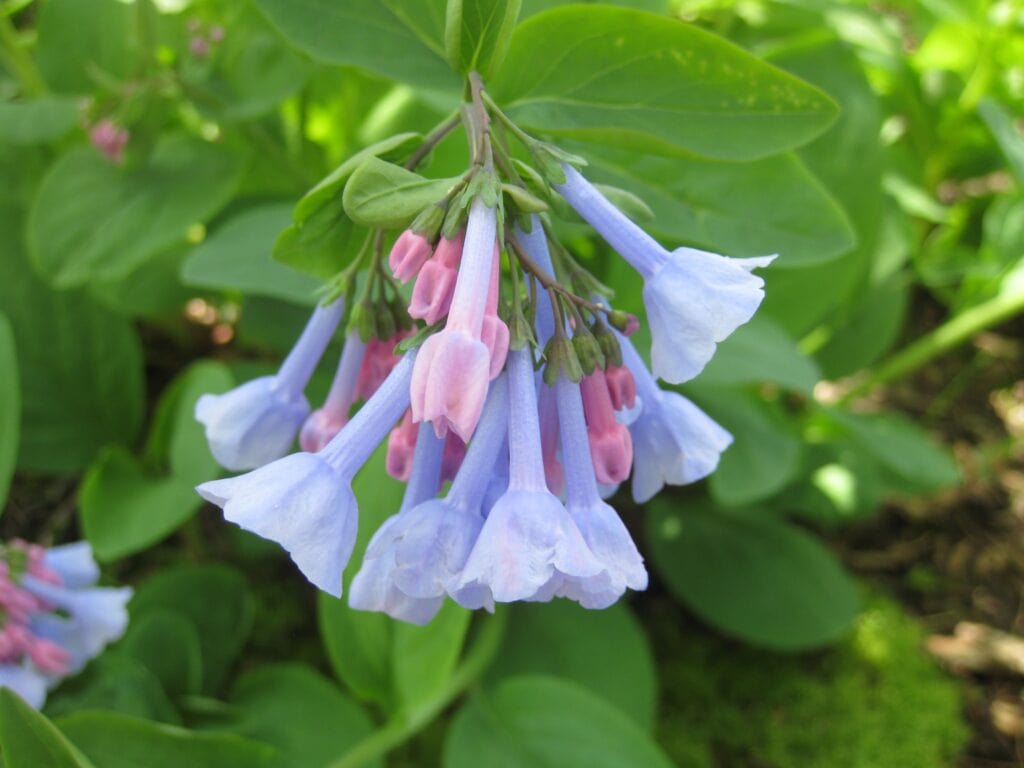
| Botanical Name: | Mertensia virginica |
| Average Size: | 10–24 inches |
| Hardiness Zone: | 3–8 |
| Sun Exposure: | Partial shade/shade |
| Bloom Time: | Early to mid-spring |
While these eye-catching bluebell flowers do grow profoundly in Virginia, they’re also widespread in the eastern parts of the US. With an average size of 10 to 24 inches and a love for shade, the Virginia bluebells bloom in deciduous woods, right after the winter frost is gone. The flowers have a trumpet-like shape, grow in clusters, and are revealed when the buds open.
It will take you one quick look at a field of Virginia bluebells to see why they’re called that. And much like cardinals, these wildflowers are favored by hummingbirds.
7. Blue Toadflax

| Botanical Name: | Nuttallanthus canadensis |
| Average Size: | 10–32 inches |
| Hardiness Zone: | 4–8 |
| Sun Exposure: | Full sun/light shade |
| Bloom Time: | April to late-summer |
Often called the Canada toadflax, this widespread wildflower is fairly tall and can reach 32 inches in height. Full sun is preferred, but light shade will do as well. Mid-spring is when the Blue toadflax starts to bloom, and it stays alive for a very long time (until the end of summer). The stems are slender and erect; the leaves are also thin, while the flowers are a combination of white, pink, and purple.
Although Nuttallanthus canadensis is a wildflower, it’s often used as an ornamental plant in western parts of the US and Canada. Also, it serves as a source of nectar for many insects and is quick to spread, covering large areas in a short time. When driving in Indiana, you’ll find it growing along roadsides.
8. Scarlet Beebalm

| Botanical Name: | Monarda didyma |
| Average Size: | 24–72 inches |
| Hardiness Zone: | 4–9 |
| Sun Exposure: | Full sun/partial shade |
| Bloom Time: | Late June to late August |
This exotic perennial herb is native to most North American states and grows in woods, bottomlands, and near waterfalls and streams. With a relatively low resistance to cold and high demand in sunlight, the Scarlet beebalm flourishes in moist soil. You’ll instantly recognize the red flowers (which can also be pink or lavender) sitting on top of the long, thin stems.
A popular choice among Indiana gardeners, this wildflower attracts hummingbirds and bees with its nectar and aromatic odor. When planted in large numbers, Scarlet beebalms are a sight to see. They bloom in mid or late June and last until the end of August.
9. Indian Blanket
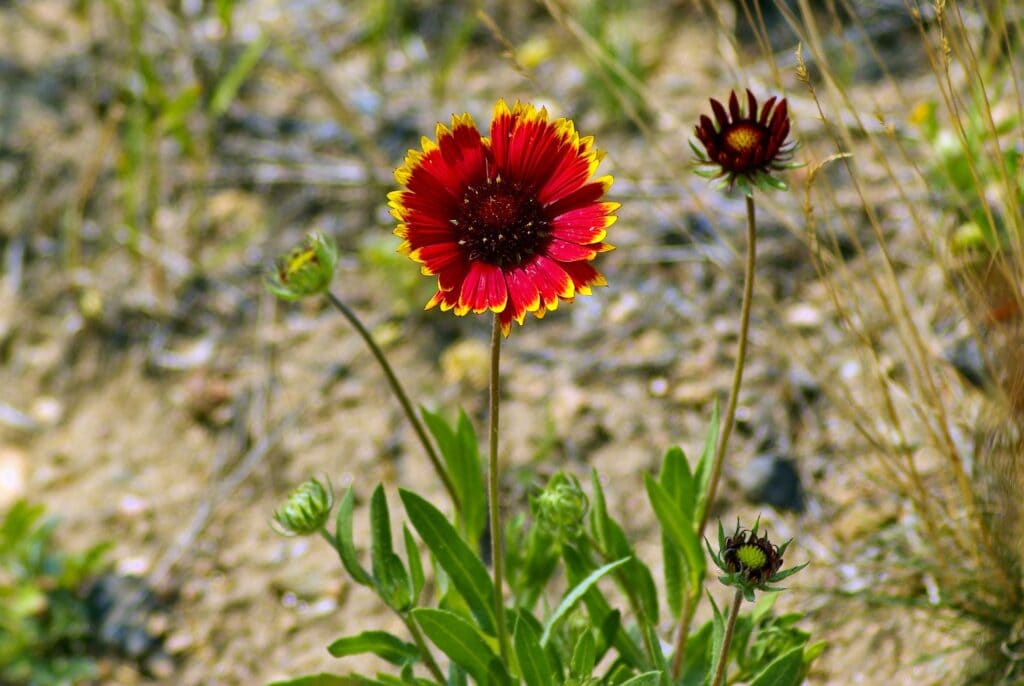
| Botanical Name: | Gaillardia pulchella |
| Average Size: | 12–24 inches |
| Hardiness Zone: | 2–11 |
| Sun Exposure: | Full sun |
| Bloom Time: | May through late August |
Categorized as a sunflower, the Indian blanket is a mixture of multiple colors, including red, yellow, and orange. It’s one of the best wild plants for attracting pollinators into your garden and is appreciated by beekeepers because the honey made from its nectar is mild and tasty. The Indian blanket starts to bloom in early May and sticks around until the end of summer.
And, thanks to an impressive hardiness range, it’s resistant to both cold and heat. It won’t take a science degree to identify the blanket, thanks to the distinctive red–yellow–orange petals.
10. Fire Pink

| Botanical Name: | Silene virginica |
| Average Size: | 8–36 inches |
| Hardiness Zone: | 4–8 |
| Sun Exposure: | Partial shade |
| Bloom Time: | Mid-spring to late summer |
This wildflower looks like it came from a different planet. An early bloomer, it turns into a crimson-red beauty as early as mid-spring. Thanks to the extended blooming period, you will be able to see it in its glory up until late summer/early fall. Shaped like a five-pointed star, the Fire pink is one of the most amazing wildflowers that grow in Indiana.
A quick note: to protect its fragile, vulnerable leaves, the fire pink has sticky hairs on the leaves and stems that scare insects away.
11. Yellow-Fringed Orchid
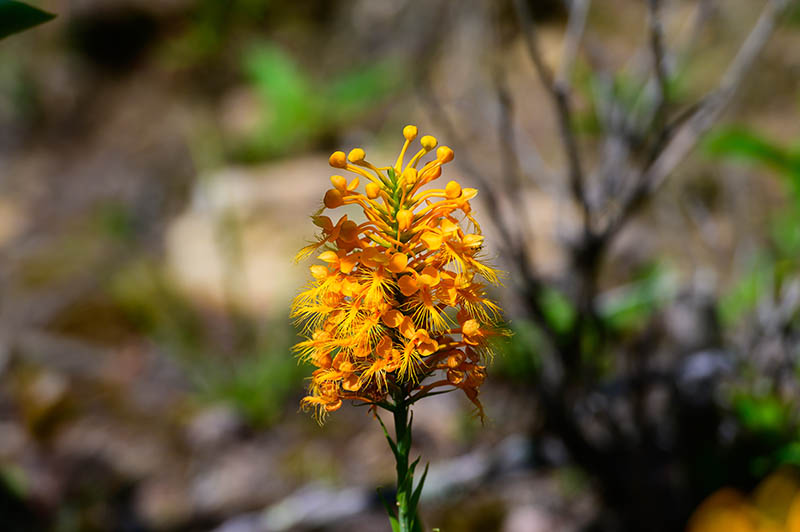
| Botanical Name: | Platanthera ciliaris |
| Average Size: | 48–72 inches |
| Hardiness Zone: | 5–9 |
| Sun Exposure: | Full sun/partial shade |
| Bloom Time: | Late June to early September |
Blooming from late June to September, the yellow-fringed orchid is a showy perennial herb with a bright and captivating cluster of yellow flowers. It’s taller than the average wildflower in Indiana (reaches up to 3 feet/72 inches) and won’t give you a hard time trying to find it. Look for it in wet, acidic areas that are exposed to full sun. This wildflower is indigenous to the eastern parts of the United States.
It’s native not only to Indiana but to other states as well. The fringed orchid is endangered in Michigan, though, because it’s often collected by the locals.
12. Touch-Me-Not

| Botanical Name: | Impatiens capensis |
| Average Size: | 24–60 inches |
| Hardiness Zone: | 2–11 |
| Sun Exposure: | Shade/partial sun |
| Bloom Time: | July through September |
Who doesn’t like the Touch-Me-Not, right? Known in some states as jewelweed, it’s instantly recognizable thanks to the orange flowers and red/brown dots. If you’re wondering why this flower has such a peculiar name, just know that the seed pods explode the second you touch them.
One of the key characteristics of Touch-Me-Not is its resistance to cold temps. Plus, it prefers shade over sun and blooms in July through early September. Edges of water streams and roadsides: that’s where Impatiens capensis grows. Look for funnel-shaped flowers and toothed leaves.
13. Wild Columbine
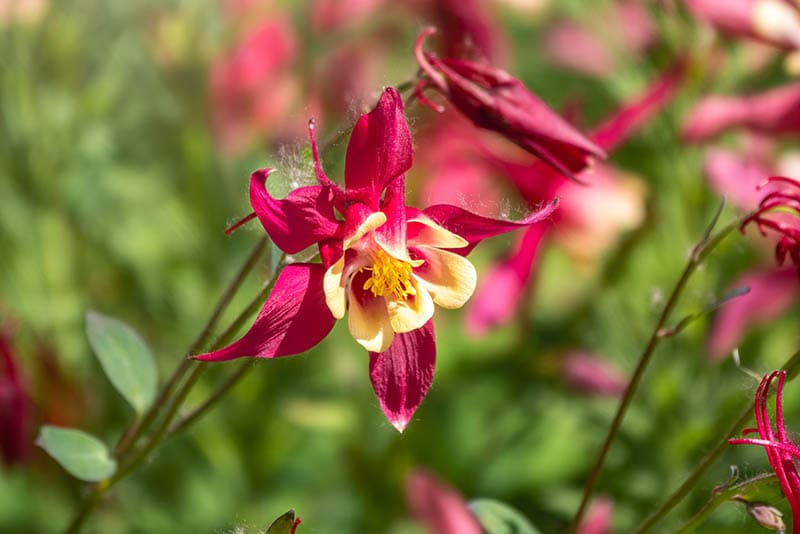
| Botanical Name: | Aquilegia canadensis |
| Average Size: | 6–48 inches |
| Hardiness Zone: | 3–8 |
| Sun Exposure: | Full sun/partial shade |
| Bloom Time: | Mid-spring to early summer |
You might know this one-of-a-kind wildflower as Jack-In-Trousers, Canadian columbine, or meeting horses. In Indiana, the wild columbine is the prevalent species. Regardless of the name, this tall (48-inch) perennial plant grows much faster when planted in a pot, fertilized, and watered. As a bonus, you’ll get an influx of hummingbirds, butterflies, and bumblebees.
Meadows, woodlands, and hills up in the skies are the natural habitat for the wild columbine. You can identify them by the spurred petals and tall stalks.
14. Dutchman’s Breeches
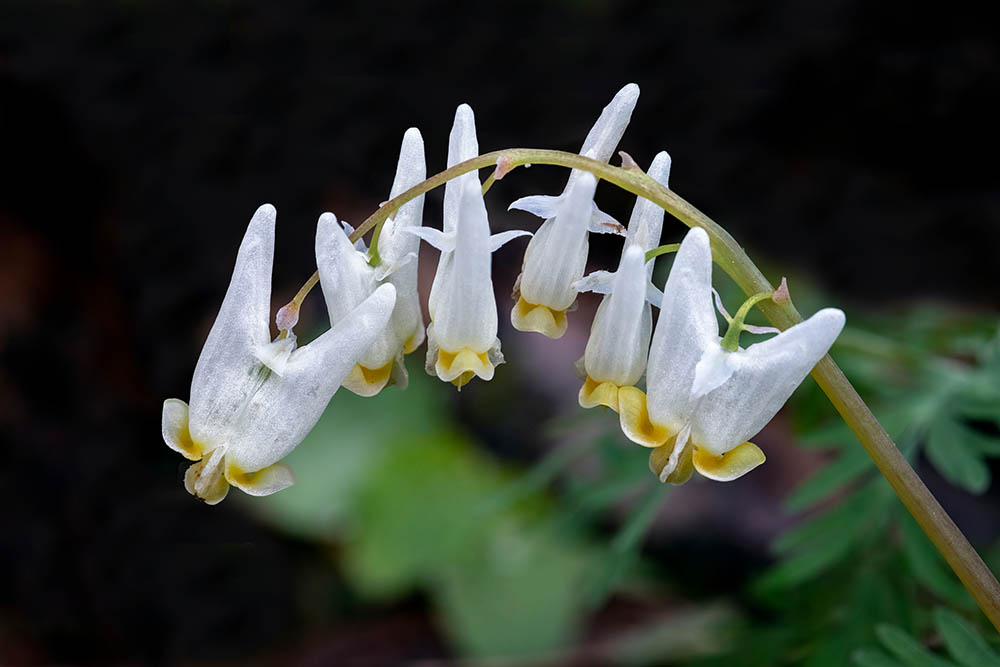
| Botanical Name: | Dicentra cucullaria |
| Average Size: | 6–12 inches |
| Hardiness Zone: | 3–8 |
| Sun Exposure: | Full sun/partial shade |
| Bloom Time: | April through May |
From afar, a field of Dutchman’s breeches looks like a group of tiny white birds. Others claim that Dicentra cucullaria looks like breeches (yes, hence the name). These spectacular flowers grow on leafless stalks. The clusters of pantaloons-shaped flowers have a fresh smell and bloom as early as April; sadly, they don’t live for long and die as soon as summer kicks in. Please keep that in mind when going flower hunting in Indiana.
15. Great Blue Lobelia
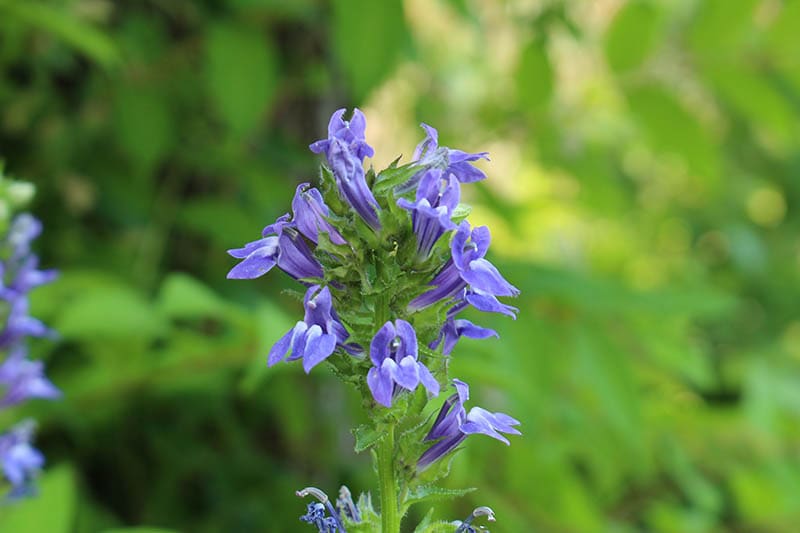
| Botanical Name: | Lobelia siphilitica |
| Average Size: | 48–76 inches |
| Hardiness Zone: | 9–11 |
| Sun Exposure: | Full sun/partial shade |
| Bloom Time: | May to mid-fall |
Dubbed the blue cardinal flower, the great blue lobelia grows in warmer parts of the country and blooms in May. It’s slightly taller compared to its red-skinned sibling and is native to the eastern US. The great blue lobelia grows best in full sun and rich soil and is hardy to zones 9 to 11. The flowers have a tubular shape and the color of lavender.
Mostly clustered on the higher stem, they are easy to spot from afar. As for the Latin name, it means this wildflower can treat syphilis. It is, indeed, used by some indigenous tribes for this exact purpose.
16. Sneezeweed
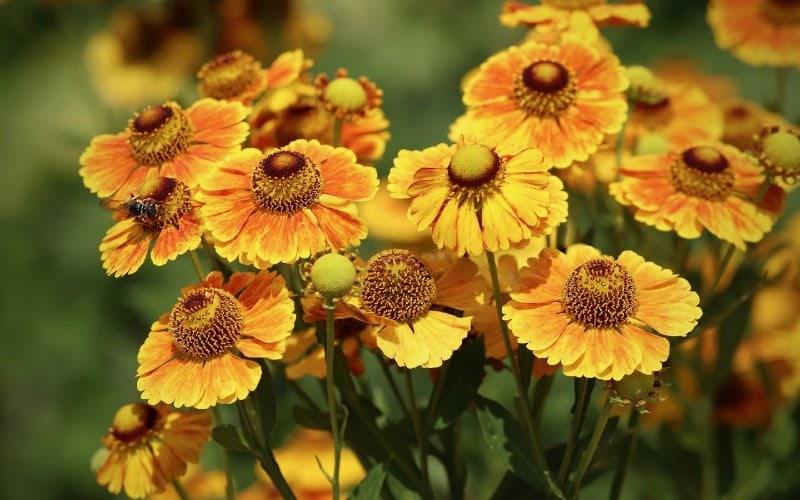
| Botanical Name: | Helenium autumnale |
| Average Size: | 24–60 inches |
| Hardiness Zone: | 3–8 |
| Sun Exposure: | Full sun/partial sun |
| Bloom Time: | Early summer to fall |
In Indiana, the sneezeweed usually blossoms in late March or early April. When it reaches maturity, the petals turn bright yellow, while the “head” is a mixture of red, orange, and yellow. Sneezeweed relies heavily on water to flourish; that’s why it grows in wetlands, swamps, and along water streams. This wildflower is popular in American gardens as well, and some of the cultivars are bigger and brighter.
More than that, they are more attractive for beneficial birds and bugs. In the past, people believed that the powder made from Helenium autumnale could push evil spirits out!
Conclusion
Indiana is an incredible place to live and travel to. The summers over there are warm, while the winters are mild. The local nature makes you feel at home while being equally mysterious and inviting. So, if you’re a big fan of exotic trees, plants, and, of course, flowers and are looking for a new place to visit, Indiana will be the perfect destination.
Today, we checked out the 16 most common and fan-favored native wildflowers that you can find there. Use our detailed metrics and descriptions as a guide on your next trip into the Indiana wilderness. The more you know about the local flora, the easier it will be to identify these mesmerizing wildflowers!
Contents


